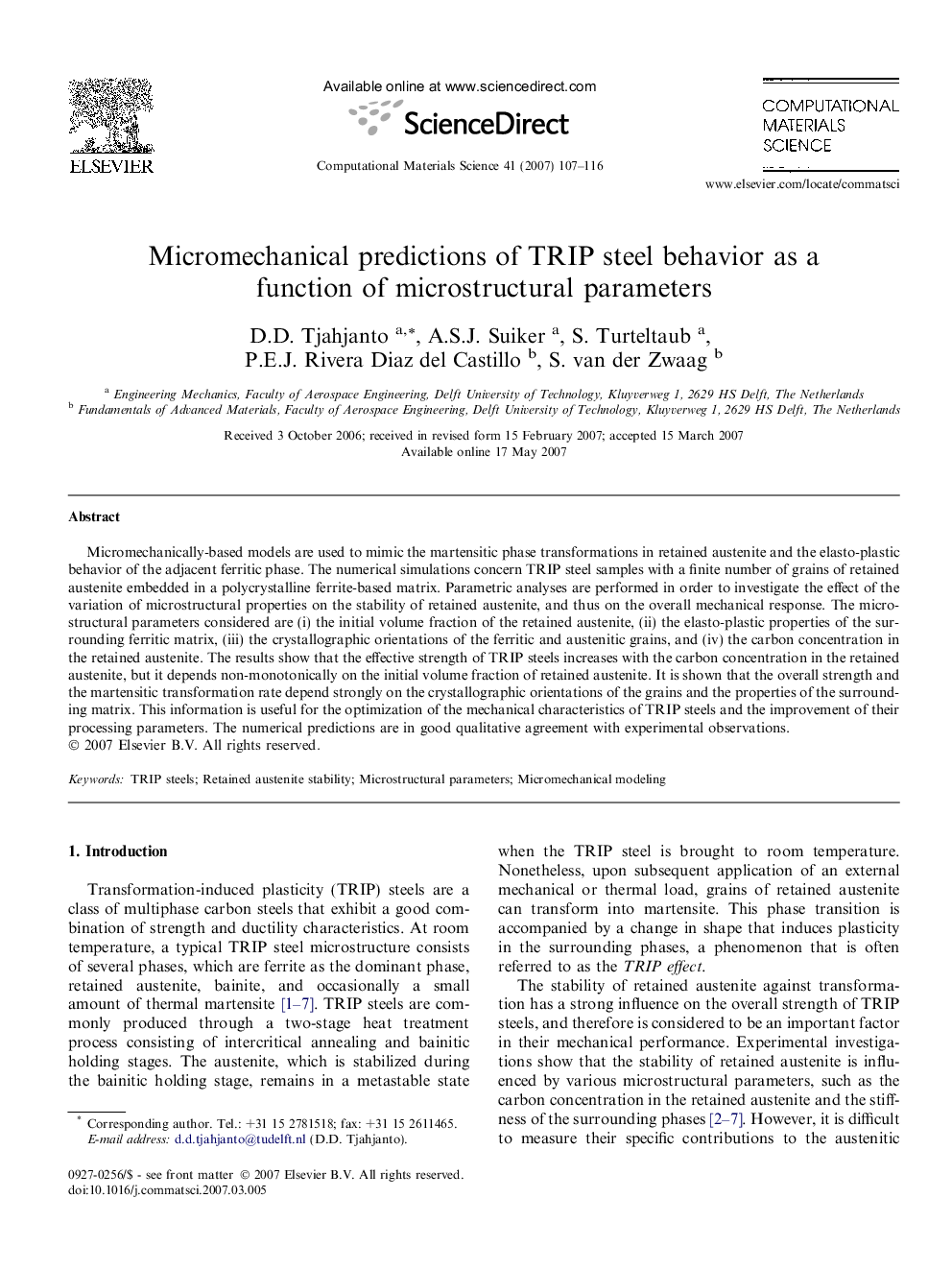| Article ID | Journal | Published Year | Pages | File Type |
|---|---|---|---|---|
| 1564371 | Computational Materials Science | 2007 | 10 Pages |
Micromechanically-based models are used to mimic the martensitic phase transformations in retained austenite and the elasto-plastic behavior of the adjacent ferritic phase. The numerical simulations concern TRIP steel samples with a finite number of grains of retained austenite embedded in a polycrystalline ferrite-based matrix. Parametric analyses are performed in order to investigate the effect of the variation of microstructural properties on the stability of retained austenite, and thus on the overall mechanical response. The microstructural parameters considered are (i) the initial volume fraction of the retained austenite, (ii) the elasto-plastic properties of the surrounding ferritic matrix, (iii) the crystallographic orientations of the ferritic and austenitic grains, and (iv) the carbon concentration in the retained austenite. The results show that the effective strength of TRIP steels increases with the carbon concentration in the retained austenite, but it depends non-monotonically on the initial volume fraction of retained austenite. It is shown that the overall strength and the martensitic transformation rate depend strongly on the crystallographic orientations of the grains and the properties of the surrounding matrix. This information is useful for the optimization of the mechanical characteristics of TRIP steels and the improvement of their processing parameters. The numerical predictions are in good qualitative agreement with experimental observations.
